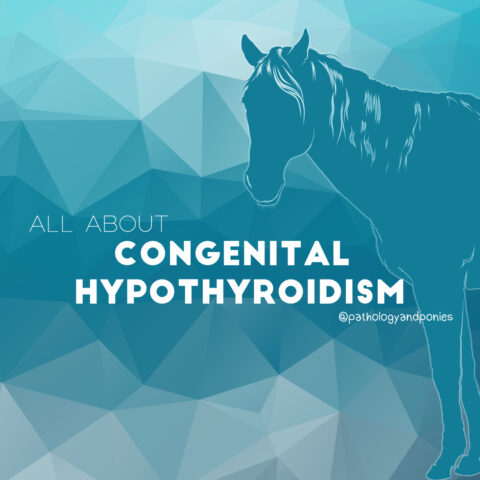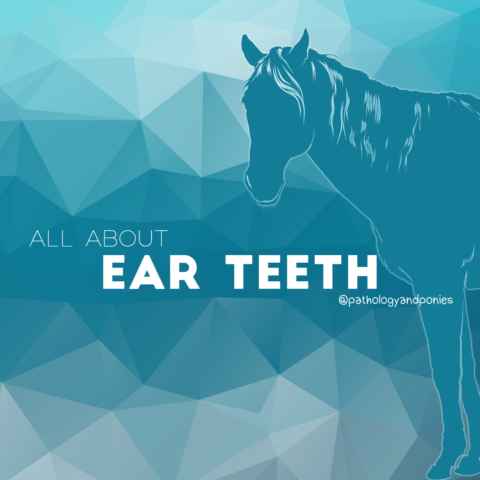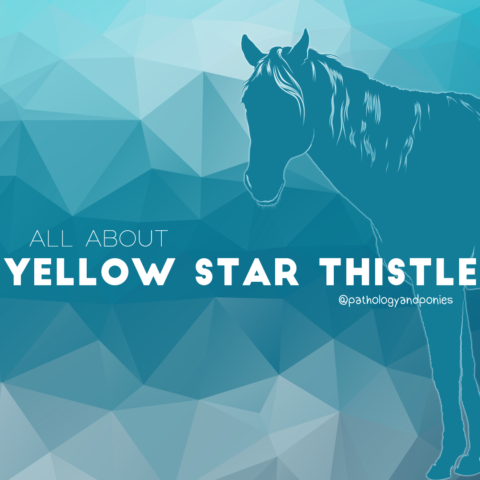



Today’s path rounds are on 𝐭𝐲𝐢𝐧𝐠 𝐮𝐩! This was a request ![]()
𝐖𝐡𝐚𝐭 𝐢𝐬 𝐢𝐭?
𝐓𝐲𝐢𝐧𝐠 𝐮𝐩 is more properly known as 𝐞𝐱𝐞𝐫𝐭𝐢𝐨𝐧𝐚𝐥 𝐫𝐡𝐚𝐛𝐝𝐨𝐦𝐲𝐨𝐥𝐲𝐬𝐢𝐬. In this condition, exercise causes rapid degeneration of the muscle fibers, which can be extremely painful!
𝐖𝐡𝐨 𝐠𝐞𝐭𝐬 𝐢𝐭?
We most commonly see this condition in horses!
𝐖𝐡𝐚𝐭 𝐜𝐚𝐮𝐬𝐞𝐬 𝐢𝐭?
The causes of tying up are 𝐦𝐮𝐥𝐭𝐢𝐟𝐚𝐜𝐭𝐨𝐫𝐢𝐚𝐥, meaning there are many possible issues that may lead to this condition. Classically, we think of this disease as occurring on Monday mornings, after the horse had the weekend off. This is called 𝐬𝐩𝐨𝐫𝐚𝐝𝐢𝐜 exertional rhabdomyolysis, and is caused by overworking the muscles. It is thought that inadequate vitamin E or selenium may contribute to this type of rhabdomyolysis.
Some horses have 𝐜𝐡𝐫𝐨𝐧𝐢𝐜 exertional rhabdomyolysis, meaning they have multiple episodes that may occur even with minimal exercise. These horses typically have a genetic disorder that leads to abnormal function of the muscle fibers, causing the repeated tying up episodes.
𝐖𝐡𝐲 𝐢𝐬 𝐭𝐡𝐢𝐬 𝐚 𝐩𝐫𝐨𝐛𝐥𝐞𝐦?
As mentioned, tying up leads to rapid degeneration of the muscle. These horses present with severe muscle cramping and stiffness, which can be extremely painful. When the muscle begins to degenerate, it releases 𝐦𝐲𝐨𝐠𝐥𝐨𝐛𝐢𝐧, a very large protein, into the bloodstream. This myoglobin gets trapped in the kidneys and can damage the tissue, leading to renal failure. In some cases, this myoglobin will leak into the urine, staining it dark red.
𝐇𝐨𝐰 𝐢𝐬 𝐢𝐭 𝐝𝐢𝐚𝐠𝐧𝐨𝐬𝐞𝐝?
Diagnosis can usually be made based on the clinical signs, and can be confirmed by a blood test for 𝐜𝐫𝐞𝐚𝐭𝐢𝐧𝐢𝐧𝐞 𝐤𝐢𝐧𝐚𝐬𝐞, another protein released by damaged muscle fibers. In chronic cases, genetic testing may be warranted to identify the underlying problem with the muscle, so the horse can be managed appropriately.
𝐇𝐨𝐰 𝐢𝐬 𝐢𝐭 𝐭𝐫𝐞𝐚𝐭𝐞𝐝?
Once the cramping is noticed, the horse should be immediately moved to a small area to restrict their movement. From there, fluid therapy is important to rehydrate the horse and flush the myoglobin out of the kidneys. In some cases, muscle relaxants may be given to help reduce the muscle cramping and pain. Most horses recover from tying up completely within 24 hours.
𝐏𝐡𝐨𝐭𝐨𝐬
1-3) Pale, degenerated muscle from tying up.
4) What the muscle looks like under the microscope! Normally a muscle fibre has a very long profile with nice even streaks along its length. The one in the middle is fat and doesn’t have nice streaks!
𝐒𝐨𝐮𝐫𝐜𝐞𝐬
Maxie, G. Jubb, Kennedy and Palmer’s Pathology of Domestic Animals, Volume 1. Sixth Edition.
Valberg SJ. Exertional myopathies in horses. Merck Veterinary Manual 2016.
Photos 1-4 © Noah’s Arkive contributors Crowell, Ramos, Harmon and Howerth licensed under CC BY-SA 4.0.




